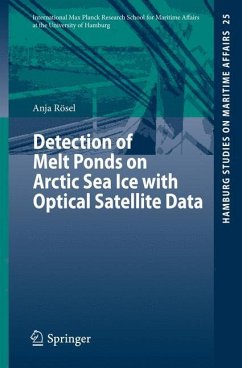The Arctic sea ice is characterized by profound changes caused by surface melting processes and the formation of melt ponds in summer. Melt ponds contribute to the ice-albedo feedback as they reduce the surface albedo of sea ice, and hence accelerate the decay of Arctic sea ice. To quantify the melting of the entire Arctic sea ice, satellite based observations are necessary. Due to different spectral properties of snow, ice, and water, theoretically, multi-spectral optical sensors are necessary for the analysis of these distinct surface types. This study demonstrates the potential of optical sensors to detect melt ponds on Arctic sea ice. For the first time, an Arctic-wide, multi-annual melt pond data set for the years 2000-2011 has been created and analyzed.








